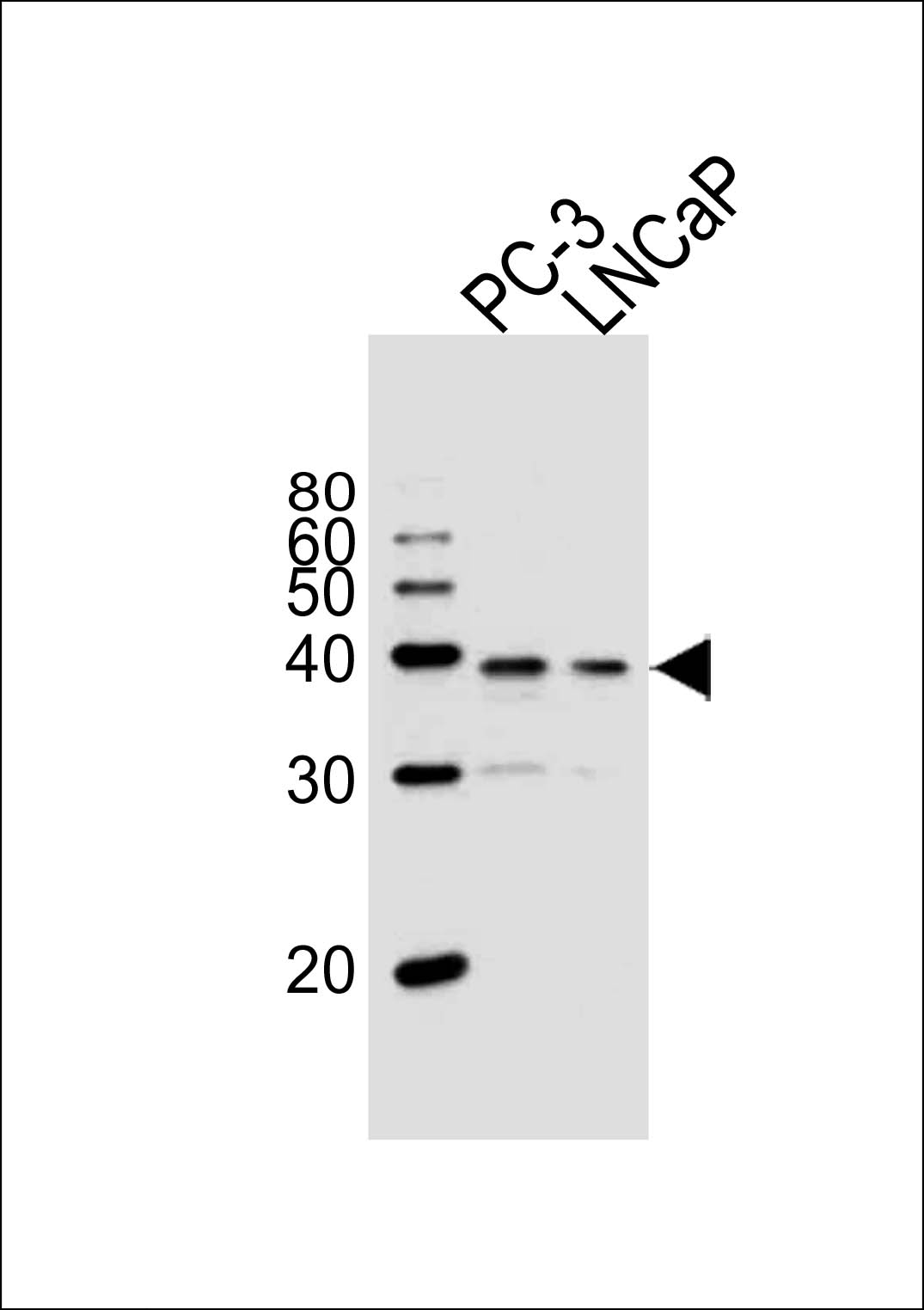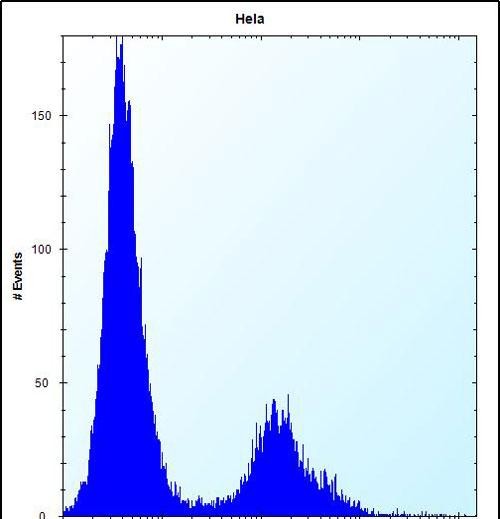VDR Antibody (Center)
Affinity Purified Rabbit Polyclonal Antibody (Pab)
- 产品详情
- 实验流程
- 背景知识
Application
| FC, WB, E |
|---|---|
| Primary Accession | P11473 |
| Other Accession | NP_001017535.1, NP_000367.1 |
| Reactivity | Human |
| Host | Rabbit |
| Clonality | Polyclonal |
| Isotype | Rabbit IgG |
| Calculated MW | 48289 Da |
| Antigen Region | 274-299 aa |
| Gene ID | 7421 |
|---|---|
| Other Names | Vitamin D3 receptor, VDR, 25-dihydroxyvitamin D3 receptor, Nuclear receptor subfamily 1 group I member 1, VDR, NR1I1 |
| Target/Specificity | This VDR antibody is generated from rabbits immunized with a KLH conjugated synthetic peptide between 274-299 amino acids from the Central region of human VDR. |
| Dilution | FC~~1:10~50 WB~~1:1000 E~~Use at an assay dependent concentration. |
| Format | Purified polyclonal antibody supplied in PBS with 0.09% (W/V) sodium azide. This antibody is purified through a protein A column, followed by peptide affinity purification. |
| Storage | Maintain refrigerated at 2-8°C for up to 2 weeks. For long term storage store at -20°C in small aliquots to prevent freeze-thaw cycles. |
| Precautions | VDR Antibody (Center) is for research use only and not for use in diagnostic or therapeutic procedures. |
| Name | VDR (HGNC:12679) |
|---|---|
| Synonyms | NR1I1 |
| Function | Nuclear receptor for calcitriol, the active form of vitamin D3 which mediates the action of this vitamin on cells (PubMed:10678179, PubMed:15728261, PubMed:16913708, PubMed:28698609, PubMed:37478846). Enters the nucleus upon vitamin D3 binding where it forms heterodimers with the retinoid X receptor/RXR (PubMed:28698609). The VDR-RXR heterodimers bind to specific response elements on DNA and activate the transcription of vitamin D3-responsive target genes (PubMed:28698609). Plays a central role in calcium homeostasis (By similarity). Also functions as a receptor for the secondary bile acid lithocholic acid (LCA) and its metabolites (PubMed:12016314, PubMed:32354638). |
| Cellular Location | Nucleus {ECO:0000255|PROSITE-ProRule:PRU00407, ECO:0000269|PubMed:12145331, ECO:0000269|PubMed:16207705, ECO:0000269|PubMed:28698609}. Cytoplasm Note=Localizes mainly to the nucleus (PubMed:12145331, PubMed:28698609). Translocated into the nucleus via both ligand- dependent and ligand-independent pathways; ligand-independent nuclear translocation is mediated by IPO4 (PubMed:16207705) |
For Research Use Only. Not For Use In Diagnostic Procedures.
Provided below are standard protocols that you may find useful for product applications.
BACKGROUND
This gene encodes the nuclear hormone receptor for vitamin D3. This receptor also functions as a receptor for the secondary bile acid lithocholic acid. The receptor belongs to the family of trans-acting transcriptional regulatory factors and shows sequence similarity to the steroid and thyroid hormone receptors. Downstream targets of this nuclear hormone receptor are principally involved in mineral metabolism though the receptor regulates a variety of other metabolic pathways, such as those involved in the immune response and cancer. Mutations in this gene are associated with type II vitamin D-resistant rickets. A single nucleotide polymorphism in the initiation codon results in an alternate translation start site three codons downstream. Alternative splicing results in multiple transcript variants encoding the same protein.
REFERENCES
An, B.S., et al. Mol. Cell. Biol. 30(20):4890-4900(2010)
Elnenaei, M.O., et al. Br. J. Nutr., 1-8 (2010) In press :
Forghani, N., et al. J. Pediatr. Endocrinol. Metab. 23(8):843-850(2010)
Alvarez-Nava, F., et al. J. Pediatr. Endocrinol. Metab. 23(8):773-782(2010)
Jurutka, P.W., et al. Proc. Natl. Acad. Sci. U.S.A. 93(8):3519-3524(1996)
终于等到您。ABCEPTA(百远生物)抗体产品。
点击下方“我要评价 ”按钮提交您的反馈信息,您的反馈和评价是我们最宝贵的财富之一,
我们将在1-3个工作日内处理您的反馈信息。
如有疑问,联系:0512-88856768 tech-china@abcepta.com.























 癌症的基本特征包括细胞增殖、血管生成、迁移、凋亡逃避机制和细胞永生等。找到癌症发生过程中这些通路的关键标记物和对应的抗体用于检测至关重要。
癌症的基本特征包括细胞增殖、血管生成、迁移、凋亡逃避机制和细胞永生等。找到癌症发生过程中这些通路的关键标记物和对应的抗体用于检测至关重要。 为您推荐一个泛素化位点预测神器——泛素化分析工具,可以为您的蛋白的泛素化位点作出预测和评分。
为您推荐一个泛素化位点预测神器——泛素化分析工具,可以为您的蛋白的泛素化位点作出预测和评分。 细胞自噬受体图形绘图工具为你的蛋白的细胞受体结合位点作出预测和评分,识别结合到自噬通路中的蛋白是非常重要的,便于让我们理解自噬在正常生理、病理过程中的作用,如发育、细胞分化、神经退化性疾病、压力条件下、感染和癌症。
细胞自噬受体图形绘图工具为你的蛋白的细胞受体结合位点作出预测和评分,识别结合到自噬通路中的蛋白是非常重要的,便于让我们理解自噬在正常生理、病理过程中的作用,如发育、细胞分化、神经退化性疾病、压力条件下、感染和癌症。







